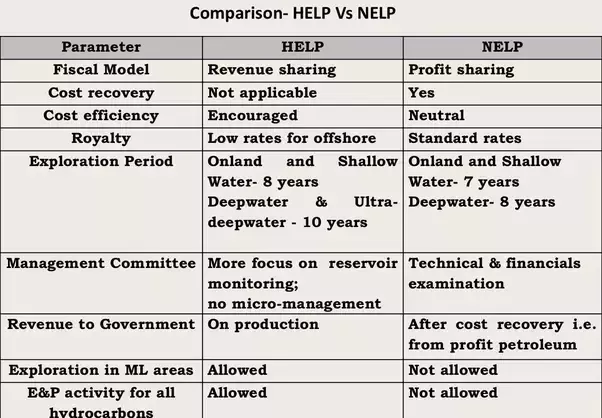Increasing Domestic Oil Production
This article is based on “Oil Exploration: Harvesting more oil from fields” which was published in The Economic Times on 29/01/2020. It talks about reasons for the decline in domestic oil production.
With rising domestic fuel consumption, India's crude imports have continued to rise. India imported 226.5 million tonnes of crude in 2018-19 (a 38% increase over 2009-10). However, in the same period, annual domestic production of crude slipped from 37.7 million tonnes to 34.2 million tonnes, catering to 13% of the total consumption in 2018-19.
Why did the domestic oil production decline?
- Global Oil Prices Crash (decline in investment): Since the 2014 oil price crash, global majors to national oil companies have cut upstream spending (exploring new oil fields), slashed breakeven costs in existing projects, and divested ventures with low or slow returns.
- Climate Change: Mounting pressure due to climate change is prompting oil and gas players to diversify into clean energy.
- This, together with the US shale sector attracting a large share of investments, will mean a decline in capital flows into conventional exploration and production.
- That poses a major challenge for India, especially when competing with bigger or more promising petroleum provinces elsewhere.
- Bureaucratic Apathy: Hydrocarbon licensing policies since 2016 have progressively reduced redundant layers of approvals and introduced improved fiscal terms.
- However, bureaucratic processes and onerous taxation continue to burden older production-sharing contracts (PSCs) that account for most of the country’s oil and gas output.
- Securing all the approvals for a field development plan in a PSC can, on average, take up to 20 months, resulting in costly delays in commercialising discovered fields.
- Policy Issues: Fiscal incentives for the use of enhanced recovery methods in oil and gas fields was a good start but does not go far enough.
- The government provided a 50% cess waiver on the use of enhanced recovery methods, but it would yield around 5% return on revenue. This according to producers’ estimates is unviable for most projects.
- The benefit of lower cess will be partly eroded in the blocks predating the New Exploration Licensing Policy (NELP) under which producers split profit oil with the government.
- Several of India’s older oil-producing fields are in natural decline.
Issues in NELP
- Production-Sharing Contracts were introduced by New Exploration Licensing Policy 1997.
- This contract is made between the government and a contractor (oil/gas exploration company).
- Once the contractor has recovered the cost of exploration, then he’ll have to share part of his profit with the Government (as per the terms and conditions in production sharing contract.)
- Issues with production-sharing contracts
- In the difficult terrain, it takes many years to complete survey, research, exploration. But production sharing contracts allow only 8 years to finish this.
- It is difficult for the Government to check the accuracy of the contractor’s account and get the correct share.
In India, Hydrocarbon blocks are allocated mainly under three different categories:
- Nomination basis: areas given prior to auction rounds;
- Pre-NELP and NELP: where areas were given through auctions based on production sharing contracts.
- HELP regime: a uniform licensing regime based on the revenue sharing model and Open Acreage Licensing Policy (OALP).
What is Enhanced Oil Recovery?
- Enhanced Oil Recovery (EOR) is the process of increasing the amount of oil that can be recovered from an oil reservoir, usually by injecting a substance into an existing oil well to increase pressure and reduce the viscosity of the oil.
- With a conventional oil well, the natural pressure in the reservoir pushes the oil to the surface or a pump is used to create the pressure. This usually results in a recovery of about 25% of a well’s oil reserves.
- Enhanced oil recovery increases oil recovery by up to 15%.
- There are several different methods of Enhanced Oil Recovery including:
- Thermal recovery: which involves the introduction of heat such as the injection of steam to lower the viscosity, or thin, the heavy viscous oil, and improve its ability to flow through the reservoir.
- Gas injection: which uses gases such as nitrogen, or carbon dioxide (CO2) that expand in a reservoir to push additional oil to a production wellbore, or other gases that dissolve in the oil to lower its viscosity and improves its flow rate.
- Chemical injection: which can involve the use of long-chained molecules called polymers to increase the effectiveness of waterfloods, or the use of detergent-like surfactants to help lower the surface tension that often prevents oil droplets from moving through a reservoir.
- CO2 injection - which uses CO2 to act as a solvent, a pressurizing agent, and reduces the oil’s viscosity.
Way Forward
- Technological solution: A variety of new technologies can prolong the life of ageing oil fields but the acquisition, testing and application of these technologies is capital-intensive.
- Thereby, fiscal framework must ensure adequate returns for producers to deploy Enhanced Oil Recovery mechanism.
- Simplification of regulations: Steps to be taken for oil blocks allocated in Pre-NELP phase:
- The current approval processes must be simplified with stipulated timelines for each sign-off, thereby avoiding cost escalations due to delays.
- Self-certification of accounts that are already subject to government audits should be allowed.
Note:
Pre-NELP blocks currently pay 60-65% of income to the government cumulative of royalty, cess, profit petroleum and income tax.
- Exploring Unconventional Hydrocarbons (UHC) such as Shale Oil and gas, tight oil/ gas and gas hydrates have become commercially viable due to technological advancement.
- Therefore, the potential of unconventional hydrocarbons for commercial exploitation must be opened now.
|
Drishti Mains Question Discuss the reasons for declining domestic oil production in India. |

